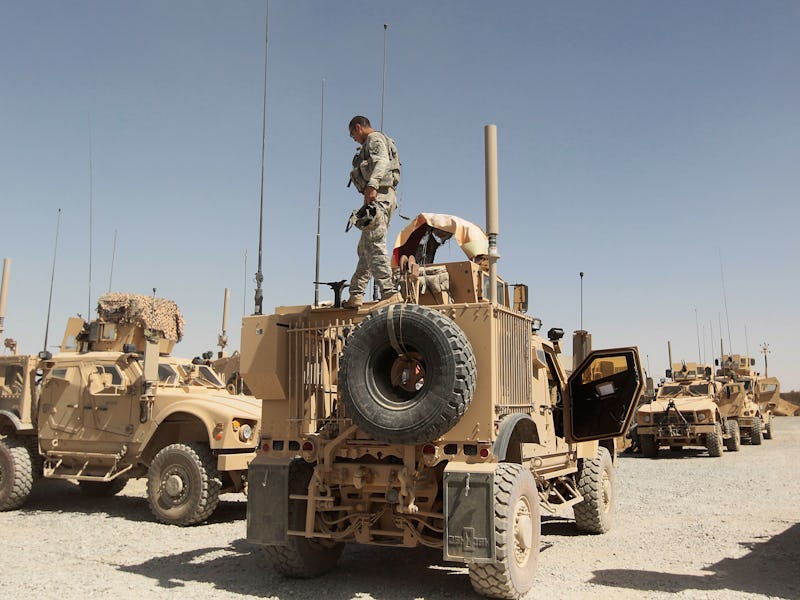Armored Antennas Let Military Vehicles Enter Stealth Mode
The new built-in antennas could jam communications and take down enemy drones.

Orchestrating a covert military operation requires lots of communication. Problem is, much of the military’s existing communications tech relies on bulky antennas that make covert overt in a hurry. To solve the problem, Dr. Ahmad Hoorfar of the University of Villanova has come up with a surprisingly simple solution: more armor.
Dr. Hoorfar, an electrical and computer engineer who heads the university’s Antenna Research Laboratory, embeds the bulky antennae inside fiberglass ballistic- and blast-resistant armor. Working together with Dr. Aly Fathy at the University of Tennessee and electronic print experts Applied Nanotech, Inc., he’s creating custom tubing out of the very materials already protecting military convoys.
He’s also solved the problem of needing separate antennae for different functions, like scrambling signals, coding, or using radar. In his design, “many functions of many antennas are integrated in one,” he told Inverse. “It takes less real estate. And our solution is they’re protected.” The new structure isn’t just streamlined — it’s also less likely to get blown up.
As warfare becomes increasingly electronic — remote-controlled explosives are already as ubiquitous as drones — antennae will need to support a lot more than communications. Dr. Hoorfar’s got that covered, too. One of his antenna’s most useful features is its “jamming capability to block radio signals, such as those used to remotely trigger explosives, including improvised explosive devices.” Turning a truck into a stealth bomber turns out to be easier than you might think.
Could those antennae block the signals remotely controlling drones? “If you put enough power in that? You can disrupt it,” said Hoorfar. Put it this way: “This antenna runs from about a few hundred megahertz to about eight gigahertz, and your telephone is about 900 megahertz. If I put enough power on the antenna, your cellphone is not going to work.”
Department of Defense agencies will be working together with Dr. Hoorfar to explore the vehicles that could benefit most from his armored antennas. If the future of warfare is indeed electronic — where the real battles will play out invisibly — they’ll be lucky to have him on their side.